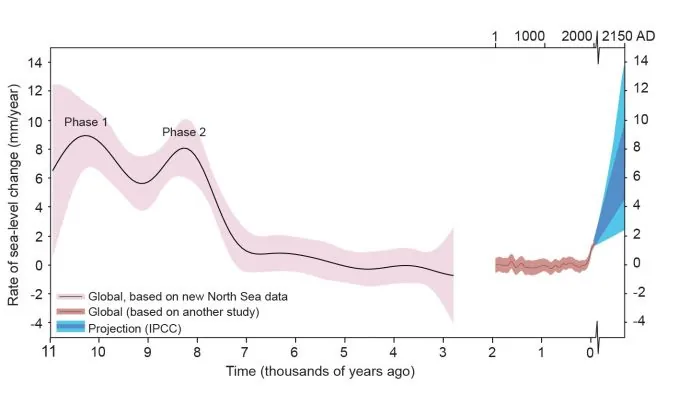
Major Breakthrough in Understanding Sea-Level Rise Since the Last Ice Age!
2025-04-01
Author: Arjun
Major Breakthrough in Understanding Sea-Level Rise Since the Last Ice Age!
Exciting new geological research sheds light on the rapid sea-level rise that occurred following the last ice age, approximately 11,700 years ago. This pivotal information is crucial for understanding how today’s global warming is influencing ice caps and contributing to rising sea levels.
Led by an international team of researchers from impressive institutions—including Deltares, Utrecht University, TNO, Delft University of Technology, and the University of Leeds—the findings were recently published in the prestigious journal Nature. This groundbreaking study highlights the urgency of monitoring ongoing climate change and its implications for our future.
Why This Matters: A Lesson from the Past
The research reveals that during the early Holocene, sea levels rose at astonishing rates, providing essential benchmarks for scientists and policymakers faced with today’s climate crisis. The Intergovernmental Panel on Climate Change (IPCC) predicts that, under current greenhouse gas emission trends, we could see sea levels rising by several meters by the year 2300. With some forecasts predicting an alarming increase of over one meter per century, the implications for human populations—especially in low-lying regions—are monumental.
The early Holocene’s distinctive climate patterns highlight stark contrasts with today’s scenario; with booming populations and extensive urban infrastructure, the potential fallout from rising sea levels today is far graver than in ancient times.
A Treasure Trove of Data
For years, the precise rates and effects of sea-level rise during the early Holocene remained elusive due to a lack of reliable geological data. This study utilized a unique dataset from the North Sea region, specifically analyzing boreholes from what was once Doggerland—an ancient land bridge that connected Great Britain to mainland Europe. As global sea levels rose, this area was submerged, providing invaluable insights into historical sea-level changes.
The researchers discovered that during specific phases of the early Holocene, global sea level rose by more than one meter per century—a stark contrast to today’s rate of approximately 3mm annually, or 30 centimeters per century. This significant finding offers a sobering perspective on the potential for rapid sea-level changes driven by climate change.
In addition to clarifying the historical rise, which researchers now estimate to be around 38 meters from 11,000 to 3,000 years ago, this study diminishes much of the uncertainty that had previously hindered climate predictions.
Future Preparations: Learning from the Past
Marc Hijma, a geologist at Deltares and the study's lead author, emphasized the project's importance: "This groundbreaking research marks a pivotal moment in understanding sea-level rise after the last ice age. It allows us to dissect the intricate interplay between climate, ice sheets, and sea levels, offering vital insights as we prepare for current and future climate impacts."
The collaborative nature of this study, spearheaded by researchers like Gert-Jan Reichart from NIOZ and Sytze van Heteren from TNO, highlights the crucial role of interdisciplinary efforts in developing a more profound understanding of climate dynamics. Their ongoing data collection and analysis stand as a testament to the importance of pooling expertise to tackle the complex challenges posed by climate change.
As we navigate the complexities of a warming planet, these new insights will inform strategies for climate adaptation, ensuring that societies can better cope with the imminent challenges of rising seas. Stay tuned as we continue to uncover vital research that shapes our understanding of Earth’s changing climate!



 Brasil (PT)
Brasil (PT)
 Canada (EN)
Canada (EN)
 Chile (ES)
Chile (ES)
 Česko (CS)
Česko (CS)
 대한민국 (KO)
대한민국 (KO)
 España (ES)
España (ES)
 France (FR)
France (FR)
 Hong Kong (EN)
Hong Kong (EN)
 Italia (IT)
Italia (IT)
 日本 (JA)
日本 (JA)
 Magyarország (HU)
Magyarország (HU)
 Norge (NO)
Norge (NO)
 Polska (PL)
Polska (PL)
 Schweiz (DE)
Schweiz (DE)
 Singapore (EN)
Singapore (EN)
 Sverige (SV)
Sverige (SV)
 Suomi (FI)
Suomi (FI)
 Türkiye (TR)
Türkiye (TR)
 الإمارات العربية المتحدة (AR)
الإمارات العربية المتحدة (AR)